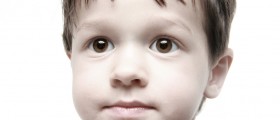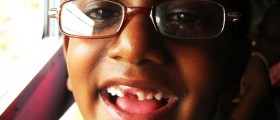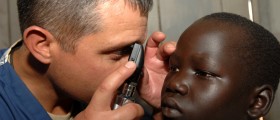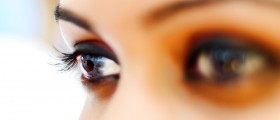
Commonly, vision problems in children go unnoticed, becoming severe as children grow older. Namely, these vision problems may be triggered by numerous factors and parents need to be on the lookout, taking appropriate steps once they notice symptoms, seeking timely medical diagnosis and treatment before it's too late.
Reasons behind Childhood Vision Problems
All of us have probably seen people who are cross-eyed or wall-eyed. This condition is called strabismus and it takes place if the child is incapable of aligning both of his/her eyes at the same time. About 5% of all children suffer from this problem. For preventive purposes, it is best to perform eye screening at a young age, in order to rule out or treat this eye disease timely.
Lazy eye, or amblyopia, is one of the most frequently seen vision problems in children, manifesting through one eye being weaker than the other. Due to the fact that this problem cannot be fixed by wearing glasses or corrective contact lenses, the best step to take is to seek medical attention at a very early age, preventing this condition from affecting your child. Basically, through timely screening, this eye problem can be noticed before the symptoms occur and, thus, be treated properly, preventing complications from appearing later.
If a child is born early, he/she is at risk of suffering from retinopathy of prematurity. Taking into consideration that the retina of our eyes starts developing while we are still in the womb of our mother and it is completely formed only in the 36th week of pregnancy, premature birth may lead to incomplete retinal development and vision problems later in life.
Speaking of retina, it may be affected by a type of cancer. This cancer is called retinoblastoma and is reported to affect about 400 children in the US yearly. When a child suffers from this condition, his/her pupils become white. Early diagnosis is crucial for a successful treatment and vision preservation.
Symptoms of Eye Diseases in Children
Usually, a child may express his/her vision problems through his/her inability to write or read properly. Also, the affected individual may need to close one eye or tilt his/her head while reading, in order to better the vision. Frequent habit of rubbing the eyes or recurring headaches may be characteristic for eye problems too, along with a tendency to skip lines while reading or complaining about floaters in the eyes. Finally, excessive production of tears can be a warning sign too, especially if the child's eyes are not completely closed during sleep.

















Your thoughts on this
Loading...